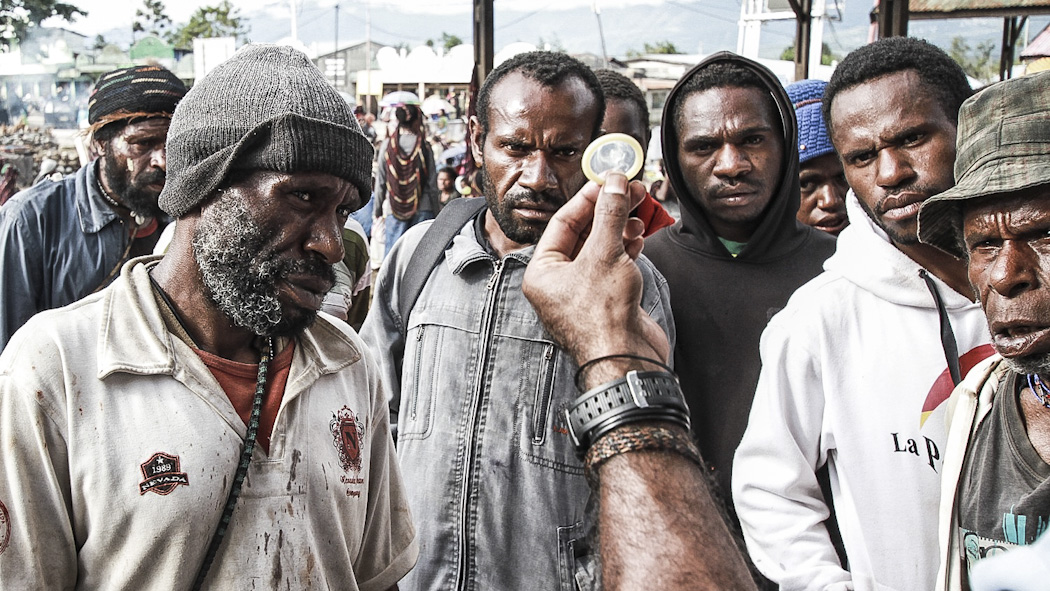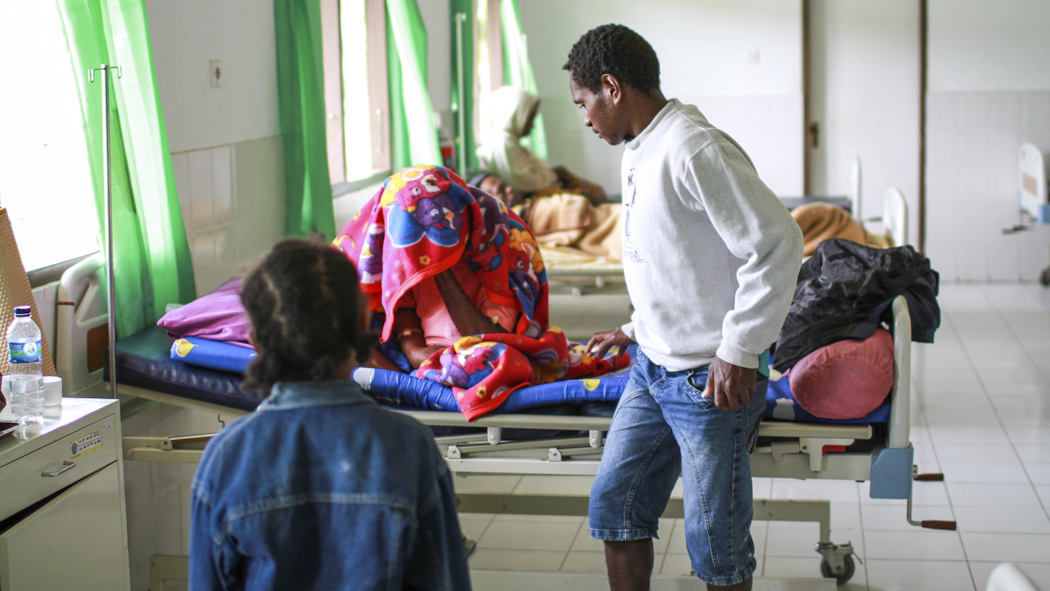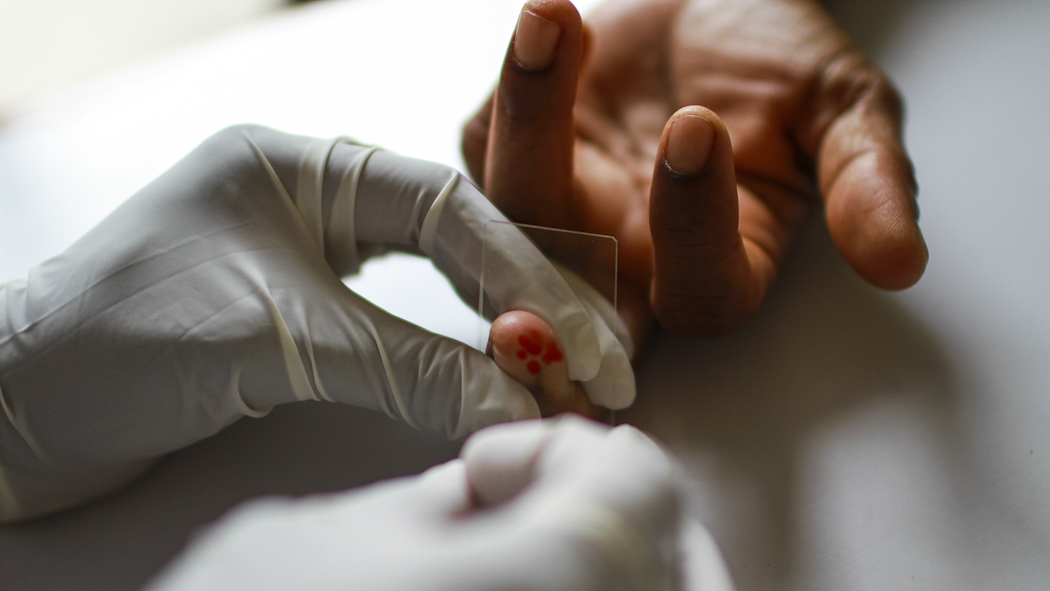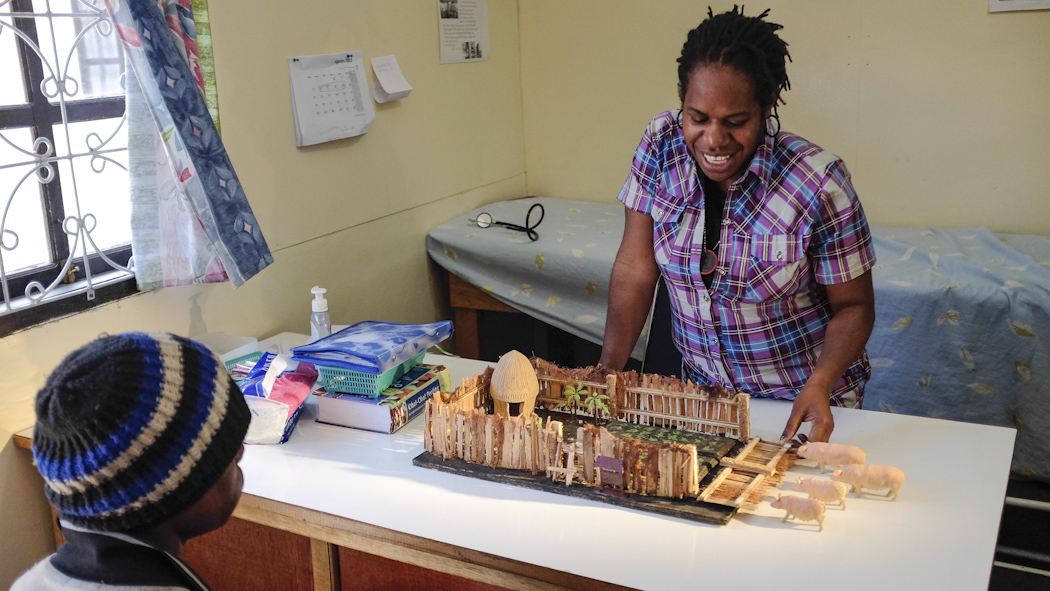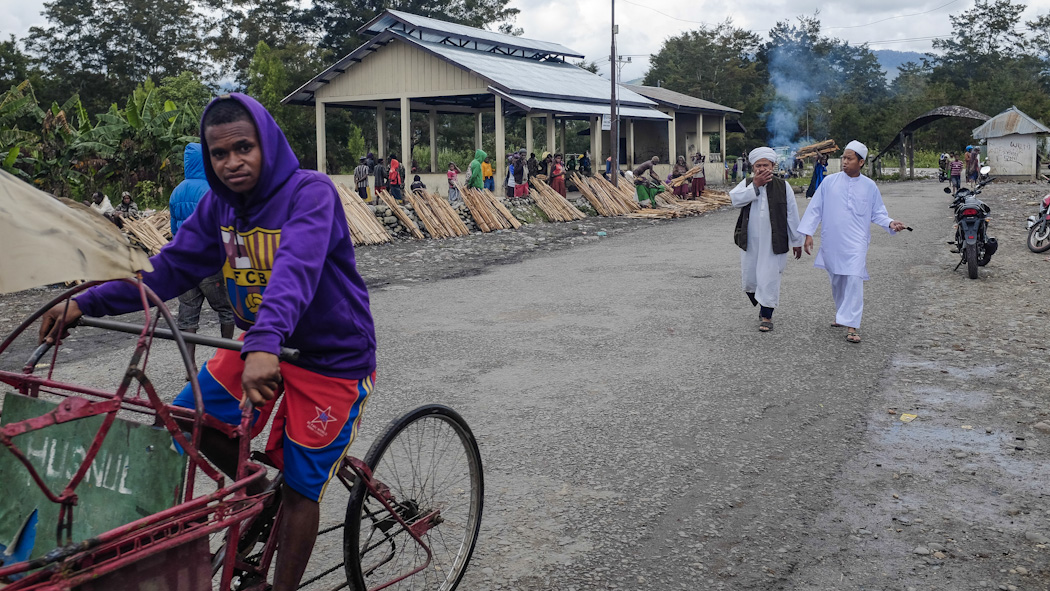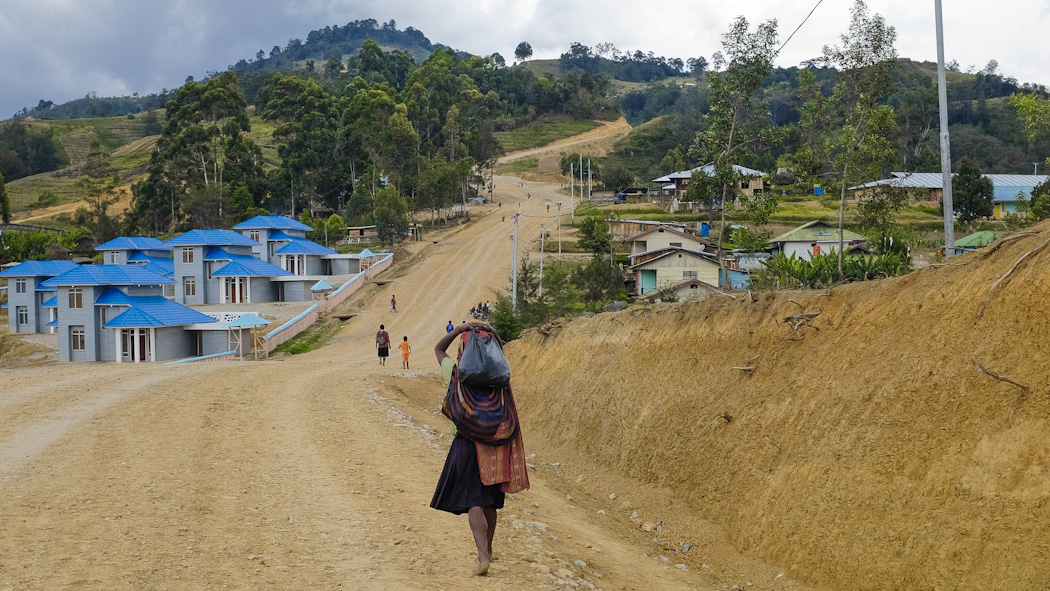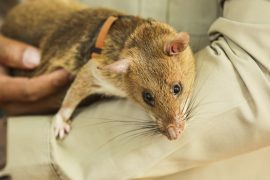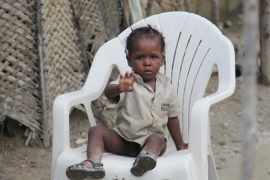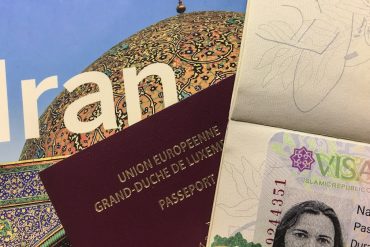That afternoon, Domi’s (38) body was burned on the pyre, the smoke rising high above the casuarina trees into the blue mountain sky, the clear sign of yet another death. The news of Domi’s death had spread quickly to his family and friends. No one was really surprised about the news, as he had become weaker and weaker over the past weeks. Earlier in the day, his family and friends gathered in the honai, dressed his body in his best clothes and sat him in a chair. As guests arrived to pay their last respects, men stood and wept loudly. Soon after, several pigs were slaughtered.
Domi was from the Dani tribe, one of the most populous tribes in the Papuan highlands. He was a wanderer, nature lover, poet and activist. Proud of his Papuan indigenous heritage, he always professed he would never marry as long as Papua was not independent. Although Domi refused to get tested or to go to hospital, it seemed probable that he had contracted HIV and had been suffering from AIDS-related illnesses for months. “There is a man who can cure AIDS with traditional medicine”, he told us. “He is a famous healer”. It might have been effective for other illnesses, but with an immune system under constant attack from HIV, he didn’t stand much of a chance.
Since its first identified case of AIDS in 1987, Indonesia has become the country with the third largest number of people living with HIV in Southeast Asia. Tanah Papua (referring to the provinces of Papua and West Papua), faces the highest HIV rates in the whole of Indonesia. With less than 2 percent of Indonesia’s total population, Papua’s HIV prevalence rate is still 15 times higher than the national average reaching the generalised epidemic level, meaning it is affecting at least 2.5 % of the adult population and 3 % among youth aged 15 to 24.
Infection rates follow the ethnic divide
In Indonesia, new HIV infections occur mainly among high-risk populations such as injecting drug users, female sex workers and their clients. But in Papua, transmission has left the confines of the high-risk and has reached the general population. Following ethnic lines, prevalence rates among Indonesian migrants are much lower than among the indigenous population who in some areas represent almost 80 % of the cases, despite them making up less than half the population of Papua.
The official number of 18,231 HIV positive people in both provinces is only the tip of the iceberg and the situation on the ground is extremely worrying. Pak Yoram, head of a local HIV prevention organisation warns “many are unaware of their condition, either because the symptoms have not appeared yet or because they refuse or are unable to see a doctor. Considering many remote areas of Papua have no functioning health services and no testing facilities, these numbers can only be guessed at”.
Despite its great natural wealth, social indicators in Tanah Papua have been the lowest in the country since the controversial inclusion of Papua into Indonesia in 1969. Health and education services are few and far between, and only very limited information about HIV reaches the Papuan population HIV testing and treatment facilities are scarce outside of the main cities. The inhabitants of rural areas need to travel far in order to get to town, transportation links are inadequate and are a huge financial burden on a population still struggling with a transition from a money-less subsistence economy to a money-centered market economy. If they do make it to the city hospital or one of the few clinics, they then have to wait long hours and sometimes days before they can be seen by a nurse or doctor. Pak Yoram, stresses that “for those who know about HIV, there is the added psychological distress and stigma of being tested positive and many refuse to get tested”.
Domi’s case is therefore not unusual, and many Papuans will agree to go to the hospital only when they are in an extremely weak state. This means they have already reached stage 4 of HIV progression, when the immune system is already severely damaged and opportunistic diseases are increasingly infecting the patient. They require lengthy hospital stays often resulting in death as the hospital staff cannot treat the patient properly with the limited means at its disposal.
There are also political reasons for Papuan’s difficulty in accessing healthcare. Papua’s inclusion into Indonesia has been long contested by many Papuans and made worse by Jakarta’s seeming indifference to the poverty and lack of opportunities of its indigenous inhabitants, especially in the highlands, despite Papua having been granted special autonomy in 2001. Seen by many migrant Indonesians as backward and slow-witted, Papuans face daily discrimination in their relations with migrant shopkeepers, government officials, police and military. It is little surprise, then, that very few of them are prepared to trust the hospital medical staff who are mostly migrants, don’t speak local languages, and have little or no affinity with local traditions and customs. A lack of knowledge about modes of transmission and political tension are fuelling the conspiracy theories. “Do you know they infect the chicken in the restaurants so Papuans get infected?”, a local community leader asks us? “Why do they cut all the women open? I think they operate them so they cannot have anymore children…”, the same community leader asks us. “My wife will give birth at home”. Cesaerian cut, the best way of avoiding HIV transmission from mother to child, has become part of one of the many conspiracy theories, due to a lack of information as well as fear of stigma.
Culture as a mode of transmission
From the Indonesian point of view, the Papuans themselves seem to be responsible for the rapidly expanding HIV epidemic. The general discourse, widely broadcast by the mainstream Indonesian/Papuan media, is that the indigenous Papuan population is culturally promiscuous and immoral, partaking in casual sex parties and wife swapping. Characteristic of this view of the epidemic is the response of Purnomo, Secretary of the Jayapura AIDS Commission, when addressing the issue of the high number of infections among women: “Their husbands were unfaithful.” Over the past half-decade, long-standing values about courtship, pre-marital sex and reproduction have been radically challenged. Casual sexual relations were previously controlled by social norms and taboos and families and clans held much more control over marriages, but as rapid changes have come to Papua in recent decades, these cultural identifiers have been severely eroded.
With this in mind, it becomes clear that curbing the spread of the virus is a matter of recognising that the Papuan cultural, historical and socio-economic context is different from that of the rest of Indonesia. The populations affected are different, the modes of transmission are different and the local responses to illness and disease are different. It is therefore essential to take these cultural factors into account. “A successful response to the HIV crisis in Papua must be based on the knowledge of the civil society and local best practices. We must take example on what has been done in Papua New Guinea, not in Europe or Jakarta” insists Pak Yoram. But the government’s approach of oppression and lack of civil liberties in Papua has hindered the development of the civil society, always branded as separatist if it dares contradict or criticise the central government. Culturally aware and indigenous-oriented economic and social development of the region is therefore paramount to building a successful long term programme for the prevention of HIV in Papua.
Cowritten by Antoine Lemaire


